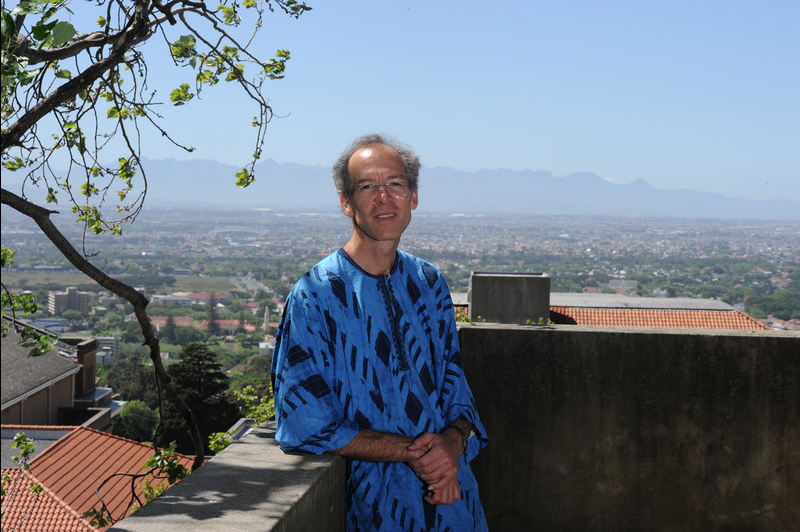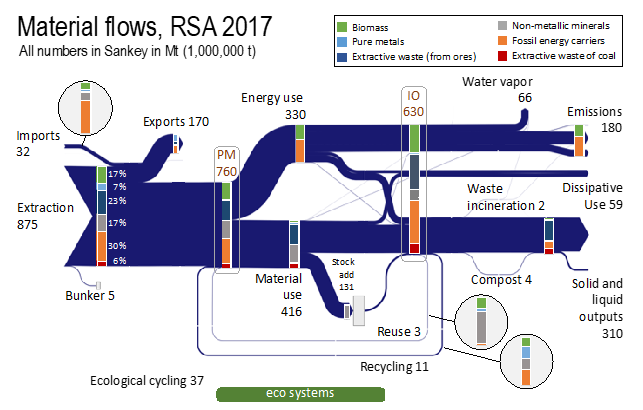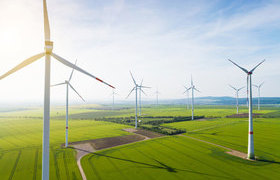Exploring a circular economy in South Africa
06 July 2021 | Story Nadia Krige. Read time 6 min.
As the longevity of our planet hangs in the balance, a shift toward more sustainable practices within global economies has become imperative. As a result, the concept of the ‘circular economy’ has gained traction and become an important topic for discussion. A recent collaborative study by researchers at the University of Cape Town (UCT) and the University of Natural Resources and Life Sciences (BOKU) in Austria maps the level of circularity in South Africa’s economy, and sheds some light on the prospects for a sustainable future.
Professor Harro von Blottnitz from UCT’s Faculty of Engineering & the Built Environment and Dr Willi Haas from BOKU were the lead researchers on the project, titled “Assessing economywide prospects for a more sustainable circular economy in South Africa”. Commissioned by the national Department of Science and Innovation (DSI), the project was launched at the beginning of 2020, and set out to assess the status quo of the South African economy.
Professor Von Blottnitz and Dr Haas presented their main findings during a recent webinar hosted by the Council for Scientific and Industrial Research. It drew more than 100 attendees, indicating the relevance of the subject matter.
“This work is critical for the DSI, because we’re at a stage now in developing a much bigger emphasis on the circular economy,” said Imraan Patel, the deputy director-general of Socio-Economic Innovation Partnerships at the DSI.
“It helps us get a much clearer sense [of] this concept that is gaining a lot of traction.”
He added that work such as this is crucial to evidence-based planning, and will assist the DSI in conceptualising a theory of change.
“It’s a real step forward in the kind of research I’ve been able to do as an industrial ecologist in South Africa,” said Von Blottnitz.
One of the main objectives of the study was to quantify all materials used in the country in one year, as well as the resulting waste and emissions. The researchers relied on multiple sources, including statistics from South Africa’s “State of Waste Report 2017”, which was released shortly before their work commenced.
The weigh-in
Information was compiled for 82 materials, organised in six main categories and 12 sub-categories. For each material they tracked domestic extraction, imports, exports, transformations into synthetic materials, additions to stock, demolition, generation of wastes and fate of wastes
They found that South Africa’s extraction of all food, feed, minerals, metal ores and fossil energy carriers (coal) amounted to 875 million tonnes (Mt) in 2017; and that compared to this, imports were relatively small, at 32 Mt.

Exports weighed in at 170 Mt and consist predominantly of refined metals and coal, while leaving the associated extractive waste in South Africa.
Furthermore, they found that waste flows are relatively high, with solid and liquid outputs returned to nature totalling about 310 Mt, of which 171 Mt is extractive waste from mining activities. Emissions from technical processes, humans and livestock accounted as carbon amount to 175 Mt.
Based on these estimates, they found that South Africa’s socio-economic cycling rate, which refers to the ratio between the sum of recycled and reused materials to domestically processed materials, sits just under 2%; while ecological cycling, which refers to biological nutrients designed to re-enter the biosphere, is significantly higher at about 5%. That means that South Africa’s economy is very far from circular, as the strongly linear Sankey diagram that summarises the findings demonstrates.
Key findings and way forward
Based on the above data, Von Blottnitz and Dr Haas shared five key findings about the circularity of South Africa’s economy, as well as strategic options for intervention in response to each:
- South Africa’s economy is materially dominated by export-oriented extractives. This is problematic, as global policies are shifting towards downsizing the non-renewable resources (such as coal and iron ore) that dominate South Africa’s exports. Therefore, it is important that South Africa anticipates these changes and responds proactively, to protect itself from economic losses.
- South Africa’s economy is energetically dominated by fossil fuels, notably domestic coal supported by imported oil. The researchers suggest that phasing out coal-based power generation will not only help to reduce greenhouse gas emissions, but would also improve circularity indicators by up to 40%. In terms of imported oil, they suggest a large-scale greening of mobility in South Africa. This would include reducing road mileage by refurbishing railroads, and harnessing urban planning that prioritises property developments that help shorten daily commutes to allow for walking, cycling and public transport.
- There is a low rate of domestic stock building. This was the most unexpected finding of the study, said Von Blottnitz, and cries out for stimulating alternative local businesses through the reuse and refurbishment of stocks in communities that need infrastructure, housing and durable consumer goods.
- There are pockets of high circularity in the domestic economy, and significant informal activity around cascade use, reuse and recycling. Several domestic recycling loops are already in place with a strong focus on metals, as well as paper and glass. However, in circular economies, recycling activities are of a lower priority than reuse. In a world-first in this kind of research, the study tried to quantitatively estimate informal reuse activities, especially of construction and demolition wastes.
- At 17% of domestic extraction, there is a sizable footprint of bio-based activities. A circular economy relies on both socioeconomic and ecological cycling. There are some attempts, in the bio-based sectors of the economy, to harvest sustainably; however, more attention does need to be paid to sustainable farming practices, especially for grassland, livestock and primary crop farming.
A new business model
Concluding their presentation, Von Blottnitz stated that instead of focusing on continuing with an export-oriented business mindset, the national development model should focus on developing the nation. The material flow picture needs to change; from a fat front-end feeding exports and leaving behind much waste, to a dominant cycle around the domestic economy.
“We want to see new businesses offering the services that the population needs and aren’t getting at the moment,” he said. “We want those to create decent jobs for all skill levels, and be tied to a stronger domestic economy with lower environmental impacts.”
 This work is licensed under a Creative Commons Attribution-NoDerivatives 4.0 International License.
This work is licensed under a Creative Commons Attribution-NoDerivatives 4.0 International License.
Please view the republishing articles page for more information.










